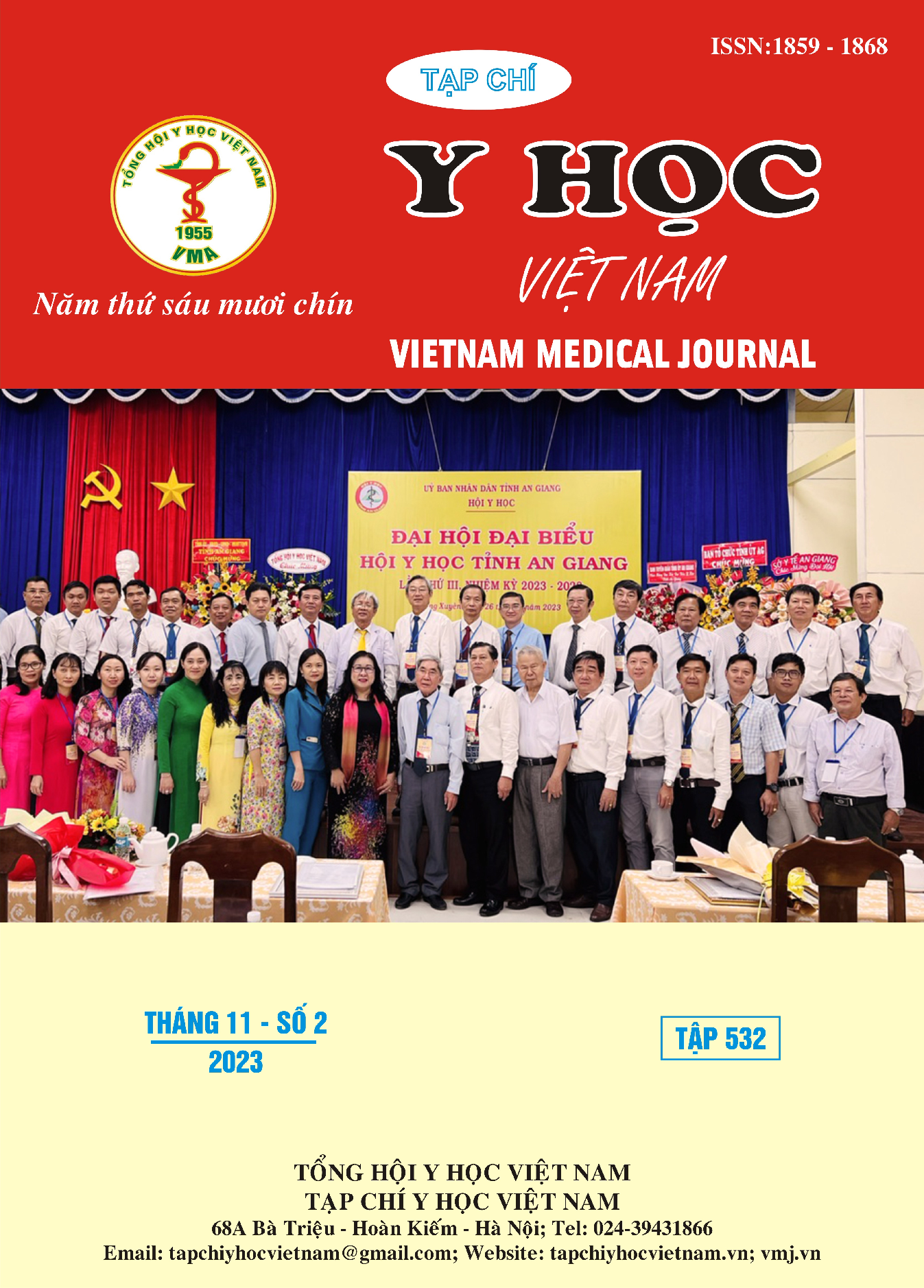RESEARCH ON DRUG-INDUCED INJURY AT THE DIGESTIVE AND HEPATOBIlIARY CENTER OF BACH MAI HOSPITAL
Main Article Content
Abstract
Objectives: Description of clinical and subclinical characteristics and investigation of drugs causing liver damage in patients with drug-induced liver injury at Gastroenterology-Hepatobiliary Center, Bach Mai Hospital. Subjects and methods: A cross-sectional descriptive study on 50 patients diagnosed with drug- induced liver injury inpatient treatment at Gastroenterology and Hepatobiliary Center - Bach Mai Hospital from August 2022 to the end of July 2023. Result: Male/Female ratio: 44/56 (%), Mean age:56.1±13.1. Reason for admission: jaundice was the most common (60%), followed by fatigue (22%). Common clinical symptoms are: fatigue (96%), jaundice (78%). The mean AST/ALT: 624 ± 619/870 ± 830 (UI/ml), the mean Total Bilirubin: 196.6 ± 146.9 µmol/l, the patients with PT < 70%: 30%, patients with INR ≥ 1.5: 20%. Types of liver injury: Necrotic/ cholestatic/ mixed form is: 70/16/14 (%). Distribution of severity: mild/moderate/severe/acute liver failure/critical is: 18/8/60/12/2 (%). Cause of DILI: traditional medicine/western medicine/functional food is: 50/44/6(%). Western medicines cause DILI: Paracetamol/ Long-acting anti-inflammatory or immunomodulatory / anti-tuberculosis/ dyslipidemia/ antifungal/ biological preparations/ Amoxicillin- clavunic, combined with Paracetamol, Esomeprazole/ NSAID+Paracetamol/Thyrozole are: 4/4/3/3/2/2/2/1/1
Article Details
Keywords
Drug-induced liver injury - DILI
References
Registry. J Hepatol. 2021;75(1):86-97. doi:10.1016/j.jhep.2021.01.029
2. Drugs and the liver: Metabolism and mechanisms of injury - UpToDate. Accessed June 22, 2022. https://www.uptodate.com/ contents/drugs-and-the-liver-metabolism-and- mechanisms-of-injury?search= dili&source=search_result&selectedTitle=3~150& usage_type=default&display_rank=3
3. Phùng Thị Hằng. Nghiên cứu đặc điểm lâm sàng, cận lâm sàng và mô bệnh học của tổn thương gan do thuốc. Luận văn tốt nghiệp bác sĩ chuyên khoa cấp II. Đại học Y Hà Nội. 2011. Published online 2011.
4. Björnsson ES, Bergmann OM, Björnsson HK, Kvaran RB, Olafsson S. Incidence, presentation, and outcomes in patients with drug- induced liver injury in the general population of
Iceland. Gastroenterology. 2013;144(7):1419- 1425, 1425.e1-3; quiz e19-20. doi: 10.1053/
j.gastro.2013.02.006
5. T S, Y L, J S, et al. Incidence and Etiology of Drug-Induced Liver Injury in Mainland China. Gastroenterology. 2019; 156(8). doi: 10.1053/ j.gastro. 2019.02.002
6. Lee BM, Lee WC, Jang JY, et al. Clinical Features of Drug-induced Liver Injury According to Etiology. J Korean Med Sci. 2015;30(12):1815. doi:10.3346/jkms.2015.30.12.1815
7. Yu Y cheng, Mao Y min, Chen C wei, et al. CSH guidelines for the diagnosis and treatment of drug-induced liver injury. Hepatol Int. 2017;11(3): 221-241. doi: 10.1007/ s12072-017-9793-2
8. Katarey D, Verma S. Drug-induced liver injury. Clin Med Lond Engl. 2016;16(Suppl 6):s104-s109. doi:10.7861/clinmedicine.16-6-s104


